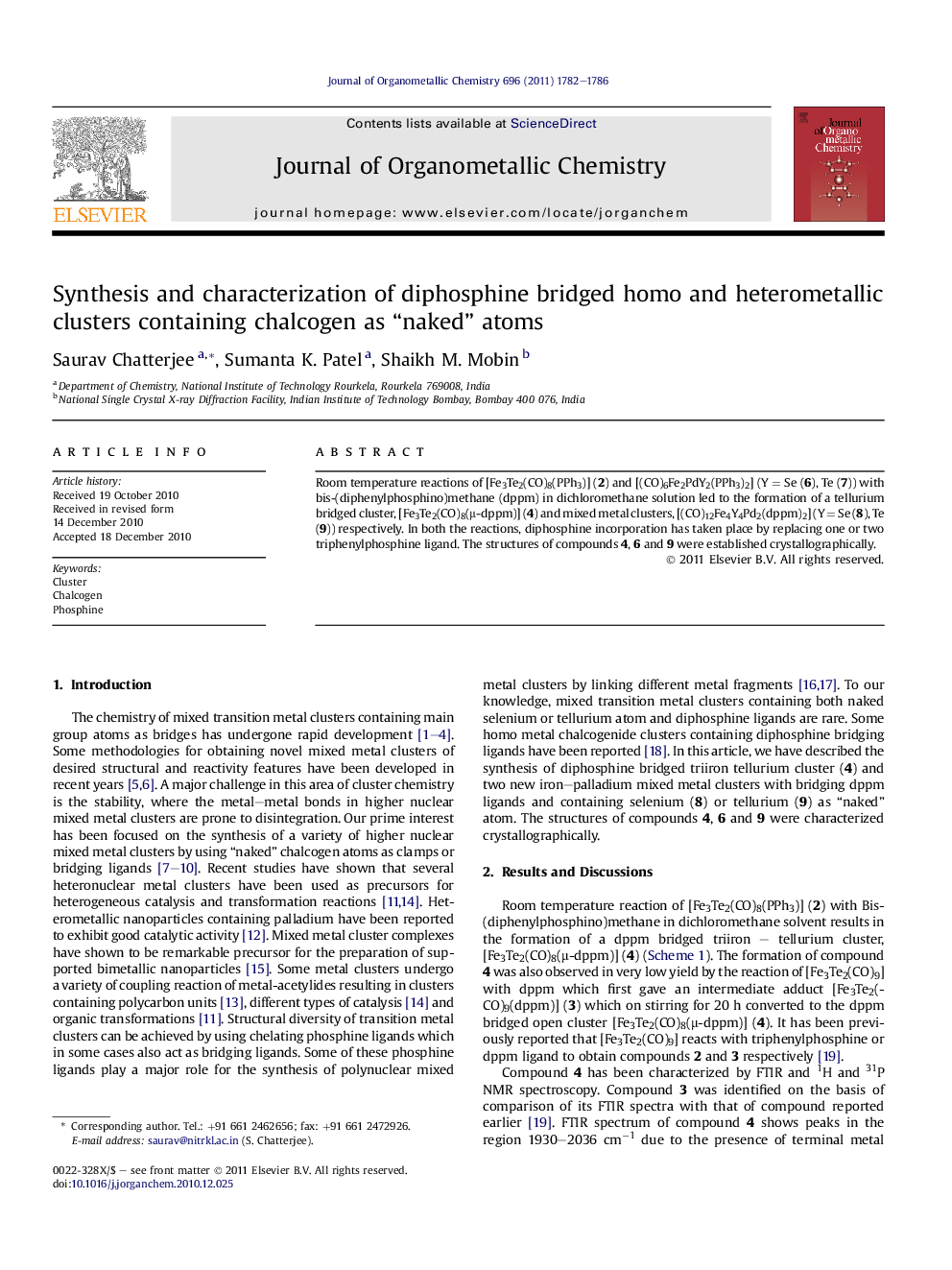| Article ID | Journal | Published Year | Pages | File Type |
|---|---|---|---|---|
| 1324418 | Journal of Organometallic Chemistry | 2011 | 5 Pages |
Room temperature reactions of [Fe3Te2(CO)8(PPh3)] (2) and [(CO)6Fe2PdY2(PPh3)2] (Y = Se (6), Te (7)) with bis-(diphenylphosphino)methane (dppm) in dichloromethane solution led to the formation of a tellurium bridged cluster, [Fe3Te2(CO)8(μ-dppm)] (4) and mixed metal clusters, [(CO)12Fe4Y4Pd2(dppm)2] (Y = Se (8), Te (9)) respectively. In both the reactions, diphosphine incorporation has taken place by replacing one or two triphenylphosphine ligand. The structures of compounds 4, 6 and 9 were established crystallographically.
Graphical abstractRoom temperature reactions of [Fe3Te2(CO)8(PPh3)] and [(CO)6Fe2PdY2(PPh3)2] (Y = Se, Te) with bis-(diphenylphosphino)methane (dppm) in dichloromethane solution led to the formation of a tellurium bridged cluster, [Fe3Te2(CO)8(μ-dppm)] and mixed metal chalcogenide clusters, [(CO)12Fe4Y4Pd2(dppm)2] (Y = Se, Te) respectively.Figure optionsDownload full-size imageDownload as PowerPoint slideHighlights► Chemistry of transition metal clusters containing main group atoms. ► Synthesis of mixed metal clusters and their reactivity has been the prime focus of our research. ► Fe/Pd mixed metal clusters were prepared in different synthetic stages using trimethlyamine N-oxide which was later characterized by IR, NMR and X-ray crystallography.
